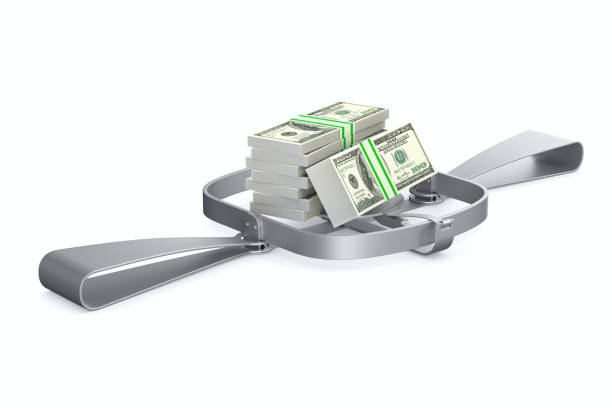Table of Contents
A bear trap is a type of trading strategy that uses technical analysis to identify when the price of an asset is likely to fall dramatically. The bear trap is named for its resemblance to an animal trap, with prices falling into a narrow channel before reversing sharply and moving down again. The bearish pattern can be found in all markets, but it’s most commonly applied by traders who trade futures or forex contracts.
What Is A Bear Trap?
A bear trap is a cryptocurrency trading strategy that involves buying at the bottom of a dip and selling at the top of it.
The strategy relies on price fluctuations in either direction and therefore requires an active trader who makes multiple trades during his day-to-day activities or week-long period (depending on how often he trades).
Suppose you purchased Bitcoin at $5,000 and sold it at $6,000 after receiving positive news about blockchain technology or a similar event – what occurred afterward? Well, someone else bought Bitcoin from you for higher than what they paid for it! This person wants more profit so he waits until another big dip comes along before re-buying again (and hopefully making even more profit).
Bear Trap Definition And Explanation
Bear traps are a type of market condition that occurs when the price of an asset suddenly drops significantly and then recovers. The drop in price usually occurs in a downtrend, which is followed by a sharp rebound.
Bear trap definition: A bear trap is defined as an investment strategy used to catch falling prices by buying at the bottom when they have fallen too far and then selling them at higher levels once they start recovering again.
How To Trade A Bear Trap?
In order to trade a bear trap successfully, it is essential to have an understanding of the market conditions, upcoming news events, and the current sentiment, whether it is bullish or bearish.
Check volume (how many shares are being traded). The volume of shares being traded at a particular price level may indicate the level’s strength and its likelihood to sustain in the future. For example, if we see high volume on both sides of an uptrend line then this could indicate that there’s some indecision over where prices will move next–and therefore make them more likely to break through said trendline as traders try different strategies in order not just lose money but also gain more profit potential by finding out what works best under these circumstances.
How do investors use bear traps?
Bear traps are a type of investment strategy used by investors to capitalize on a falling market. A bear trap is essentially a price pattern that signals an impending reversal in the current trend and can be used as an entry point for purchasing stocks that have fallen in value due to adverse market conditions. The most common example of this would be when you see a stock drop significantly, but then recover its losses before continuing in its downward trend again.
In order for this strategy to work properly, it’s important for investors to understand what makes up each part of the equation:
Bull = uptrending market (rising prices)
Bear = downtrending market (falling prices)
Lion = sideways movement
Bear Trap Examples
A bear trap is a type of price action which occurs when an asset drops significantly, only to reverse and rise again. A bear trap is often used by traders as a strategy to enter the market at lower levels.
Bear traps are a type of trap used to capture bears. They can be made of metal, or other materials that do not easily break down in the wilderness.
They’re usually set in the ground and baited with food, like meat or berries. Hunters use them to catch animals for food or fur coats.
A bear trap is a type of financial instrument that’s designed to limit losses on short positions. It’s also known as a “downward-facing dog,” because it bears down on traders who take short positions in stocks or other assets.
Bear traps can be set by institutional investors who want to manipulate the market, but they can also occur naturally when there are high levels of volatility and uncertainty in the market.
The purpose of a bear trap is to force short sellers into buying back their positions at higher prices than they would have otherwise paid if they hadn’t been caught in an unpredictable selloff like this one
How to prevent a bear trap
To prevent falling into a bear trap, the most crucial action to take is to stay away from bears. These animals are unpredictable and hazardous, and they have been known to lay traps for people who wander into their territory without knowing. If you come across a bear, it’s best to leave the area right away and avoid returning until it’s safe.
If you have no choice but to enter bear country (and why would anyone want that?), then keep your guard up at all times by staying alert and keeping track of your surroundings as best as possible–especially when moving through thick brush or dense undergrowth where visibility may be limited.
Bear traps are a market condition where the price of an asset drops sharply, then recovers, and then drops again. They’re short-term phenomena that occur in the market.
Bear traps are temporary trend reversals that can be either bearish or bullish depending on your outlook. For example, if you’re long on oil futures and they hit their high but begin to fall instead of continuing higher as expected (a bearish reversal), this would be considered a bear trap because it’s not what was expected from normal market behavior when oil made new highs.
Takeaway:
Bear traps are an important part of a trader’s arsenal. They allow you to take advantage of price movements and increase the probability that you’ll make money on each trade. But bear traps can be hard to spot, especially if you’re new to trading or not paying close attention.

Ethan Moore, crypto and stock trader since 2012. Co-founder of Blockwatch experts team.
